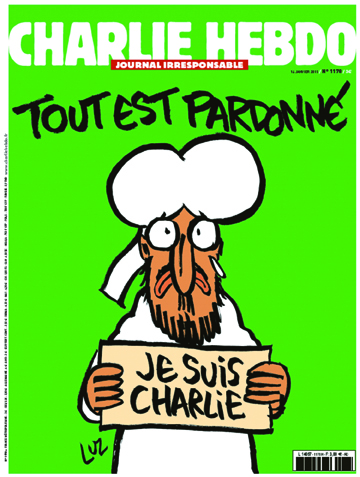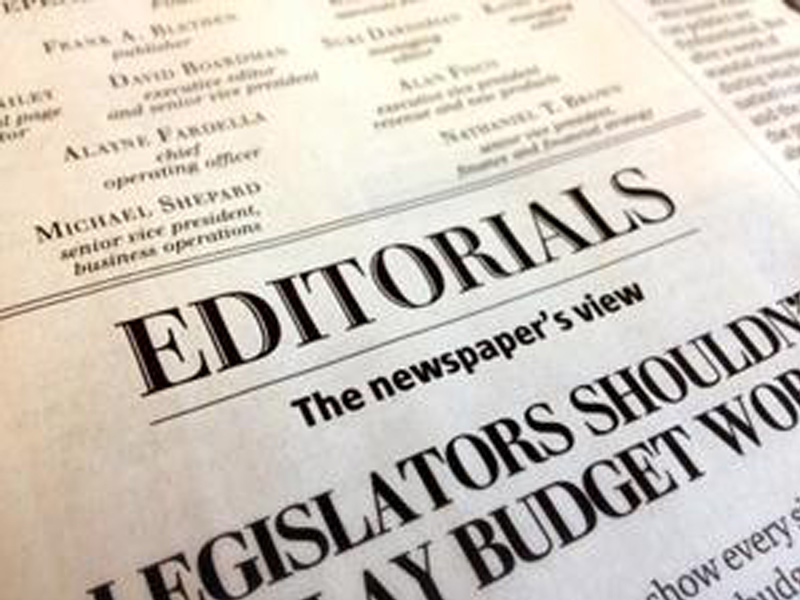 That Is Always The Question For A Newspaper
That Is Always The Question For A Newspaper
The international dispute on whether to publish one or more of the Charlie Hebdo cartoons that lampoon Islam is a question that faces publications from the “newspaper of record” The New York Times down to local papers such as the Glendale Cherry Creek Chronicle. We at the Chronicle are fiercely proud of being a local paper covering local news in the Cherry Creek Valley. We, as a matter of general editorial policy, do not cover state, national or international events except where the event directly affects the Cherry Creek Valley.
But the Charlie Hebdo cartoons and their censorship does directly affect us in the Cherry Creek Valley. Charlie Hebdo is a French publication out of Paris, that until the controversy and butchering of 12 people in the offices of that publication by two French jihadists, had a circulation that was significantly smaller than the Chronicle. As an editorial board we are saddened by the decision of The New York Times and certain other national publications not to publish the cartoons. The reason given by the Times executive editor Dean Baquet was, “Out of respect to our readers we have avoided those we felt were offensive.”
The rationale rings hollow. The Times relishes printing materials offensive to some of its Jewish and Christian readers including artwork from a Holocaust-denying Iranian cartoonist Maziar Bijani, and Andres Serrano whose most famous work of “art” is titled “Piss Christ.” When a University of Southern California journalism professor challenged Baquet calling his decision “absolute cowardice,” Baquet went on Facebook to call the professor an “A**hole.” It is said that if you’re taking flak, you’re over the target.
The New York Times is not just any paper. Most of the members of this editorial board grew up venerating that publication. The failure to publish the cartoons reveals far deeper problems at that institution. It was reported that one of the killers in Paris stated to a woman, “I’m not going to kill you because you’re a woman, we don’t kill women, but you must convert to Islam, read the Quran and cover yourself” before shouting “Allah Akbar.” The Times bizarrely changed the quote to “Don’t be afraid, calm down, I won’t kill you. You are a woman. But think about what you are doing. It’s not right.”
Why would the publication falsely change a quote except that the editor understands that the Times fears offending the sensibilities of some of its Muslim readers that it will falsify quotes. What a fall from grace by what was once America’s most respected and courageous newspaper.
We print here five Charlie Hebdo cartoon covers including the edition printed after the massacre, at right, which has sold over a million copies. What is surprising is how relatively bland the cartoons are. France does not have a particularly strong tradition of free speech, notwithstanding the parade of the notables in Paris and the holding up of pens and pencils. In 1990 under the Gayssot Act, it became illegal to question crimes against humanity under the London Charter of 1945 which would cover the Holocaust but potentially much more.
French laws also make any communication deemed hate or discriminatory speech criminal which are so broadly defined that it conceivably covers virtually any type of statement that a governmental official may deem offensive. Under this very broad law septuagenarian actress Bridget Bardot was convicted of hate speech in 2008 and fined $11,920 for alluding to Muslims as leading “us around by the nose, which destroys our country.”
Following the Charlie Hebdo massacre French comedian Dieudonné was arrested for simply saying on a Facebook entry, “Tonight, as far as I’m concerned, I feel like Charlie Coulibaly” mixing the last name of the killer who held hostages at a Jewish deli and the first name of the magazine. In France, as is the case of The New York Times, what is highly offensive is very much subjective.
We do not think it is of any great act of courage for us to print the Charlie Hebdo cartoons although, as noted above, the French magazine had a circulation significantly less than this publication at the time of the massacre. When we printed a story on “How Powerful Is Islam in the Valley — Could Rioting and Bombing in Europe Come Here Some Day (Local Islamic Center Asserts It Is The Victim of Discrimination)” on the front page of the December 2005 issue of the Chronicle, we certainly received our share of irate calls that suggested acts of violence against the paper. But that goes with the territory.
The Editorial Board has to consider whether to print or not to print what may be considered controversial stories virtually every edition. We view as part of our job to comfort the afflicted and afflict the comfortable. We have printed stories that have offended, among others, the mayor of Denver, the Denver D.A ., the executive director of the Denver Department of Planning and Development, well connected real estate developers in the Cherry Creek Valley, powerful union officials, and certain powers that be in Glendale.
As a result we have lost our fair share of advertising along with access to various public officials. But what is the point of publishing a newspaper if it is not to print the truth, at least as we see it? We understand we do not have a monopoly on the truth as readers are happy to point out in the letters and emails to the paper. Occasionally a reader will write that this paper is certainly “not” The New York Times. Sadly that statement is no longer the insult that it once was intended to be.
— Editorial Board

